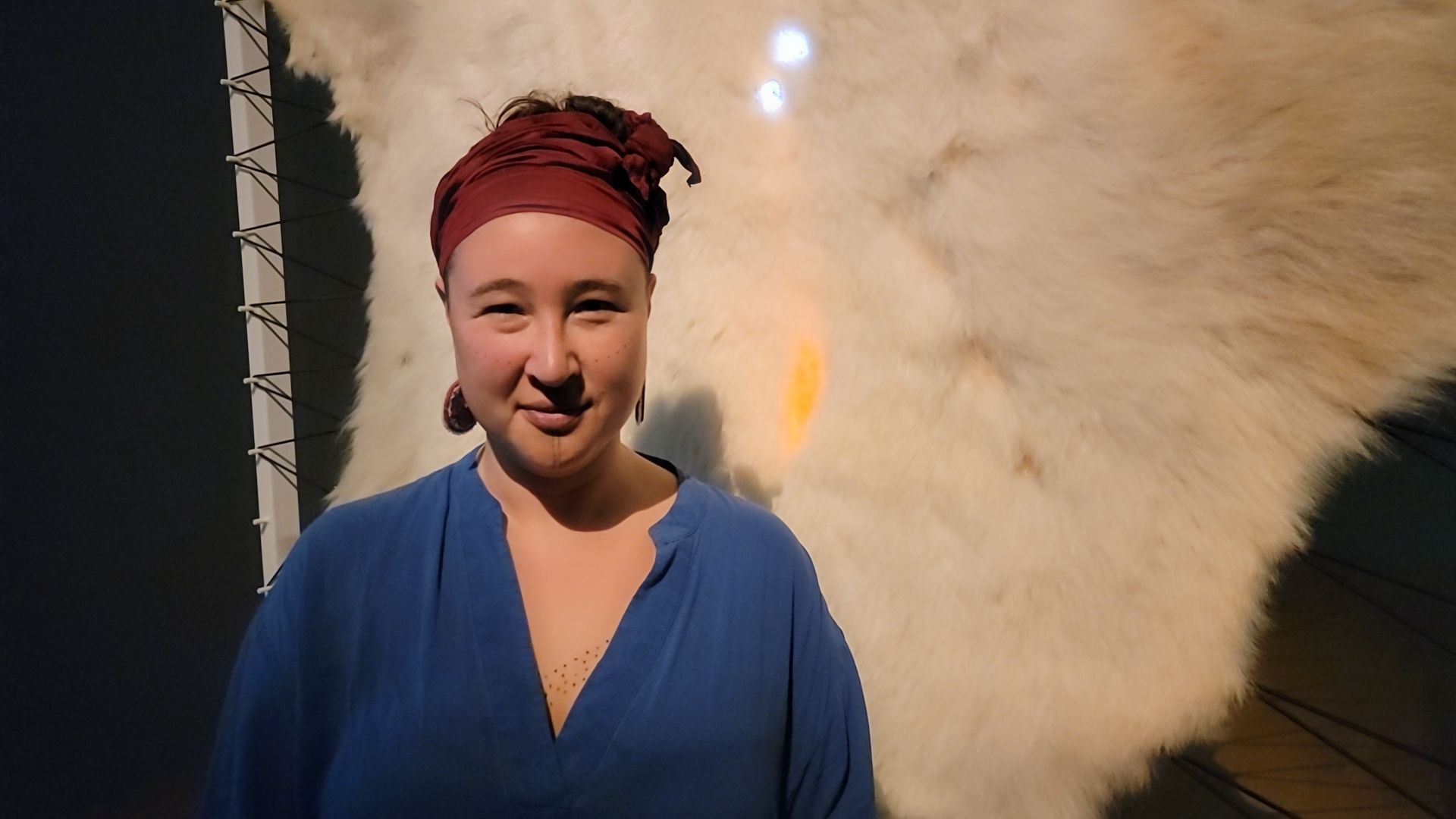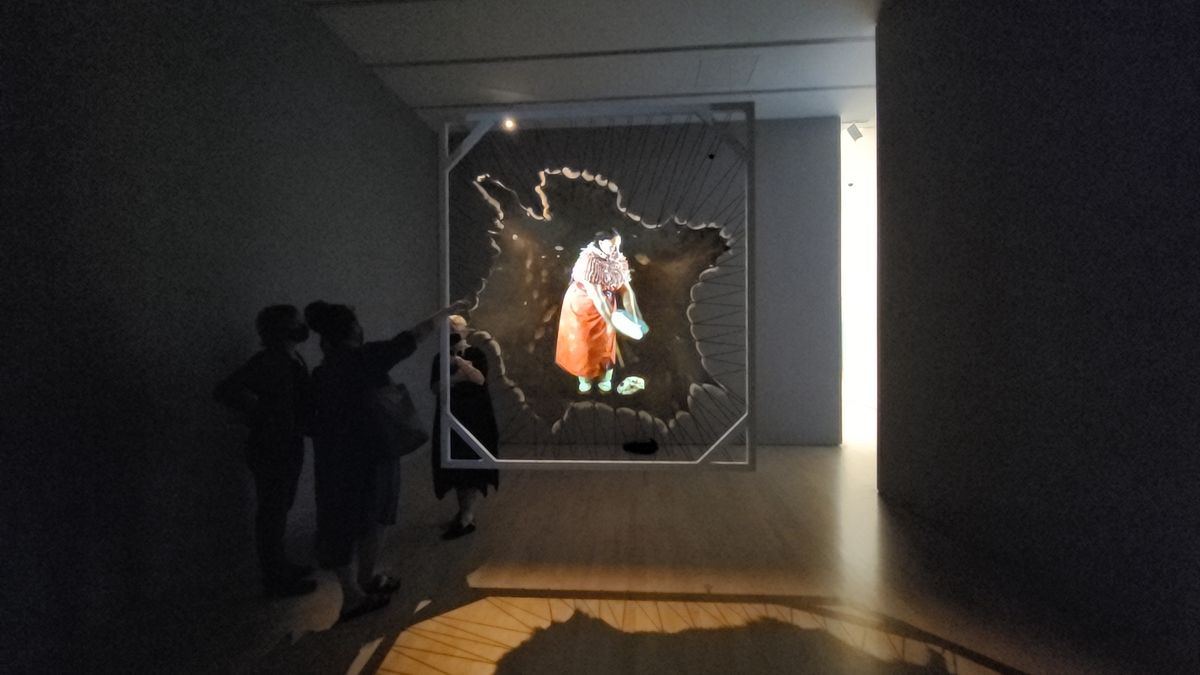Inuk artist and Sobey Art Award finalist Laakkuluk Williamson Bathory’s latest work, Nannupugut! (We killed a polar bear!),was inspired by a close encounter with the animal whose skin serves as the screen for a video installation. Interviewed on her way to the opening of an exhibition of work by award finalists at the National Gallery of Canada in Ottawa, Bathory said “it’s a wonderful honour to be amongst these fabulous artists from across Canada”, but added: “It’s a weight on my shoulders to be the only Indigenous artist shortlisted.”
Indeed, at a time of a national reckoning in Canada following revelations of mass graves at residential schools, Bathory’s work based on her killing of a polar bear who tried to enter her family cabin in the middle of the night finds itself at the nexus of debates on climate change and Indigenous rights. Long at odds with non-Indigenous animal rights activists, the performance artist, spoken word poet, and writer says of her new work: “It’s an opportunity to create story telling in a different genre. I’m giving people the intimacy that I was privy to when I killed the polar bear.”
In a two-minute video filmed by the artist Jamie Griffiths, which is projected onto the skin of the bear, Bathory appears dressed in traditional Greenlandic regalia, drumming and dancing to “honour the bear’s soul”. The artist bases much of her work on the traditional Greenlandic mask dance called uaajeerneq, revived by her mother Karla Williamson, after the art form was nearly eradicated by colonial missionaries. Bathed in rich colours evoking the bear’s blood and fat at the moment of the ceremonial butchering and sharing of the meat with the community, the film goes forward and then in reverse and is a “celebration of the bear’s spirit”, Bathory says.

Inuk artist Laakkuluk Williamson Bathory with the polar bear skin that serves as the screen for her video work. Photo: © Jamie Griffiths
She remembers the encounter that inspired her work with a sense of the sacred. “For a few seconds, the polar bear’s face and mine were 40 centimetres apart. It was an intimate moment. I’m the first person in my family to have killed a polar bear. It was a great honour in our family. I know she chose us—the life of the bear was a gift to us.”
In middle of night, Bathory and her husband and three children gutted the animal and removed the hide so the meat would not spoil, and then went on the local VHF radio and “called everyone in the area to come” and share in the bounty.
Bathory had to tell local government authorities that she had killed the bear in self-defence and was obliged to give up the hide. Unfortunately, it was improperly stored for five months and by the time it was returned to the artist it was in a “putrid” state, she says. Undaunted, Bathory adds, “We cleaned it, cut off the rotten parts, stretched it and made it as clean and dry as possible, so it could become a surface for projection”.
The artist takes issue with how polar bears are “highly anthropomorphised by white people” in an attitude of “frontierism.” As Bathory said in June when she was first shortlisted for the Sobey award: “My work is populated with my family, culture, language, collaborators and all my ancestors, so it is not just me on this shortlist: it is all of us. I make art because creative expression is essential to decolonization.”
“Communities in the arctic,” she says, “know many polar bears are around and extremely healthy, strong, adaptive and intelligent animals.” They are also “terrifying and powerful,” Bathory says, a feeling she hoped to convey in her work, along with “a sense of the danger that everyone was in at that moment of encounter.”


